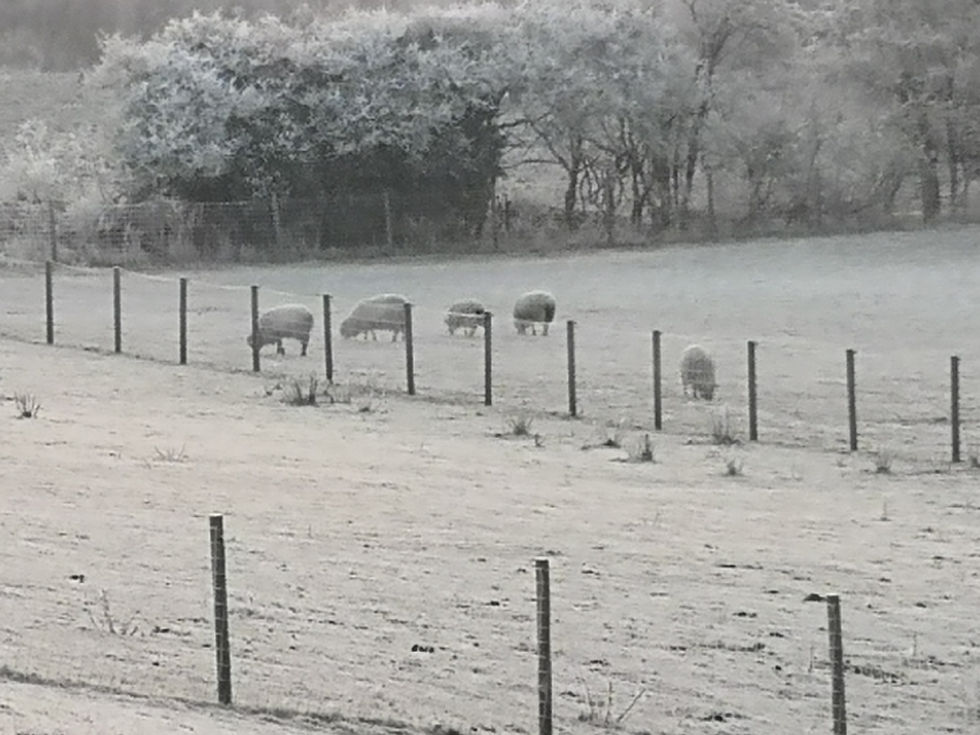Celebrating Leicester Longwool rare breed sheep
- Woolplay blog
- Jun 9
- 3 min read
Back in 1725, a baby was born, Robert Bakewell. He grew up to be a farmer and renown agriculturalist. His greatest and most lasting achievement was the breeding of the first Leicester Longwool sheep.

He came from a long line of farmers in Leicestershire. His aims when developing the Leicester Longwool were to help to fertilise the land, produce wool and make a major contribution to the food of the nation and the prosperity of the farmer as a producer of meat. Up until that time, sheep were mainly used just for their wool. But with the industrial revolution and people moving into the growing towns and cities, they were no longer able to produce their own food and needed to buy it.
Before Bakewell’s interventions, the longwool sheep of the Midlands were large, slow-growing, and produced coarse wool. Bakewell sought to improve these traits by selectively breeding local Leicester sheep with other breeds, notably the Lincoln and Ryeland. This crossbreeding produced a new type of sheep—initially known as the "New Leicester" or "Dishley Leicester"—that grew faster, had a better-shaped carcass for meat production, and yielded a heavier, more lustrous fleece.

Although these sheep look a bit weird to us today, they were bred like this to maximise the meat and fat (used for candles). But they still have the flat backs, barrel bodies and square stance.
They would still have been a great breed if this is how they remained, but their greatest contribution has been that they became a foundation breed for many other longwool sheep, including the Border Leicester, Wensleydale, Lleyn, and even contributed to the development of international breeds like the Corriedale and Ile de France. The breed’s reputation spread globally, with exports to North America and Australia as early as the 19th century. George Washington, for example, acquired New Leicester rams to improve his flock in the United States.
When crossed with other breeds, Leicester Longwools impart "hybrid vigour," producing lambs that are larger, hardier, and faster-growing than either parent. This quality has been especially valuable in the British lamb industry and remains important for producing high-quality meat and wool.
So this is the good news story but .....
This year the breed was put raised to the "at risk" category of rare breed sheep as there are fewer than 500 breeding ewes in the UK. Cue the cute lamb pictures from our flock!
This has been for a number of reasons -
During the 20th century, commercial demand shifted towards sheep breeds that produced smaller, leaner carcasses, which were more suited to changing consumer preferences. Leicester Longwools, being larger and slower-growing, lost favour to these newer, more commercially viable breeds
The introduction and widespread adoption of cotton in the 18th century, followed by synthetic fibres in the 20th century, led to a decline in the demand for wool. This shift has significantly impacted all wool breeds, including the Leicester Longwool, as people moved away from wearing woollen garments
As the breed became less commercially attractive, the number of flocks dwindled. By the mid-20th century, Leicester Longwools had become rare in both the UK and globally. They even went extinct in the USA in the 1930s and 40s, only to be reintroduced decades later for conservation purposes
Our breed society, the Leicester Longwool Sheep Breeders Association, working with the Rare Breeds Survival Trust are working with sheep owners such as us to maintain the genetic diversity as well as promoting the breed for its high-quality wool, meat, and value in conservation grazing projects. The lustrous, long-stapled fleece is fabulous for spinning and woolly crafting and the spun yarn great to knit or weave with. It takes dyes really well too.






















Comments